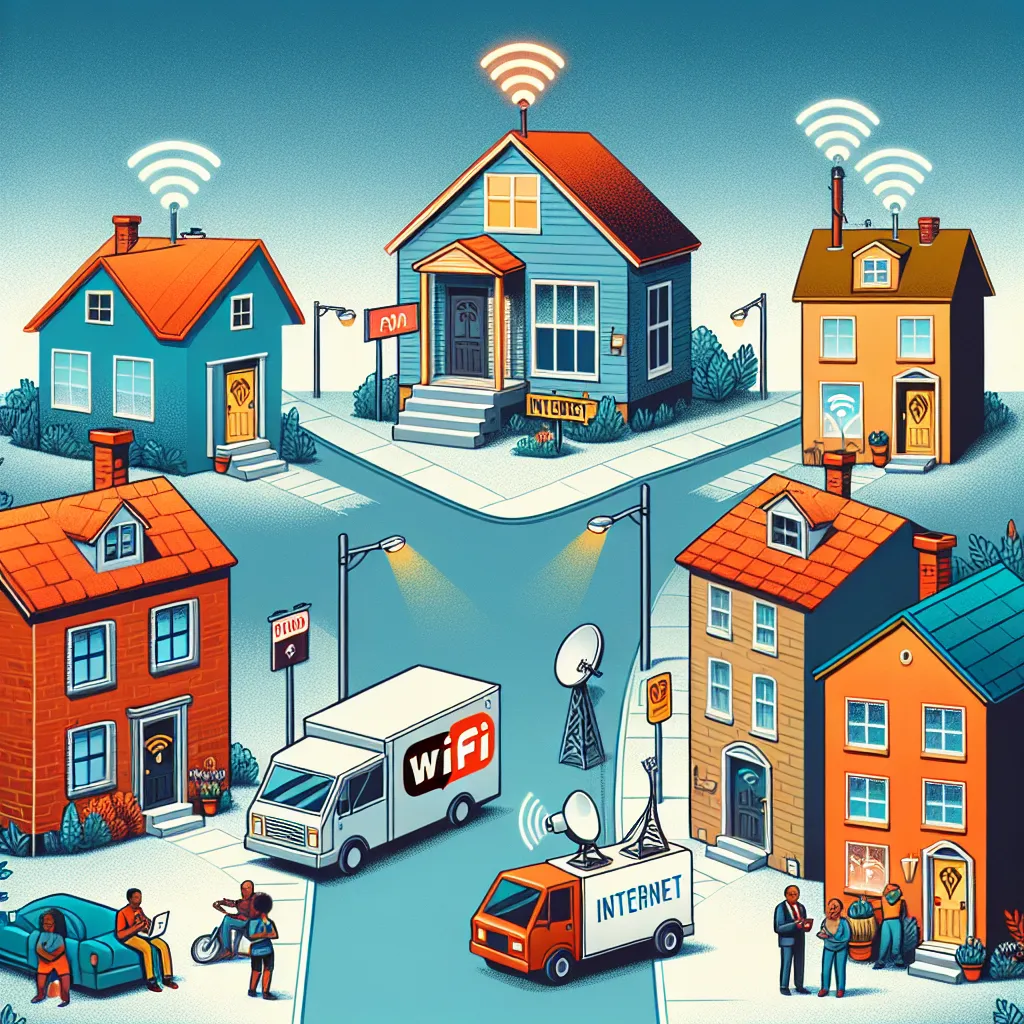What Internet is Available at My Address?
What Internet is Available at My Address?
With the internet becoming an integral part of our lives, it’s crucial to have a reliable and high-speed internet connection at home. Whether you’re a student, a remote worker, a gamer, or simply someone who enjoys streaming movies and TV shows, having access to the right internet service is essential. But how do you determine what kind of internet is available at your address? In this article, we will explore different types of internet connections and methods to check what options are available in your area.
Types of Internet Connections
Before diving into the process of checking available internet providers, let’s first understand the various types of internet connections that are commonly available:
1. Digital Subscriber Line (DSL) Internet
DSL is a popular type of internet connection that utilizes existing telephone lines to transmit data. It provides a reliable and stable connection with moderate speeds. DSL can be an excellent choice if you’re located in a suburban or urban area.
2. Cable Internet
Cable internet utilizes the same coaxial cables that deliver cable TV signals. It offers faster speeds compared to DSL and is widely available in urban and suburban areas. Cable internet is suitable for households with multiple devices connected simultaneously.
3. Fiber Optic Internet
Fiber optic internet is the fastest and most reliable type of internet connection available today. It uses fiber optic cables to transmit data through pulses of light. Fiber optic internet is ideal for heavy internet users, gamers, and those requiring ultra-fast speeds.
4. Satellite Internet
Satellite internet is a connection that uses geostationary satellites to deliver internet access. It’s particularly useful in rural or remote areas where other types of connections may not be available. However, satellite internet often has higher latency and limited data caps.
5. Wireless Internet
Wireless internet refers to internet connections that are transmitted via radio waves. This type of connection is commonly used through cellular networks (3G, 4G, or 5G) or Wi-Fi hotspots. Wireless internet is highly convenient and widely available, but the speeds and reliability may vary depending on the provider and location.
Checking Available Internet Providers
Now that you have a basic understanding of the types of internet connections, let’s explore how you can check what internet options are available at your address:

1. Online Service Provider Websites
Many internet service providers (ISPs) have websites that allow you to enter your address and check their service availability. Visit the websites of popular ISPs in your area and look for a section where you can enter your address or ZIP code. The websites will provide you with a list of available plans and their respective speeds.
2. Broadband Search Engines
Several online tools and search engines specialize in helping users find available internet options at their address. These platforms aggregate data from multiple ISPs and present you with a comprehensive list of available plans. Some popular broadband search engines include BroadbandNow, Allconnect, and HighSpeedInternet.com.
3. Local Cable and Phone Companies
Contact your local cable and phone companies directly to inquire about the internet services they offer in your area. They will provide you with details such as availability, plans, speeds, and pricing. Often, speaking with a representative can give you a better understanding of the available options and any promotional deals that might be available.
4. Ask Your Neighbors
If you’re unsure about the internet options available at your address, you can always ask your neighbors. Neighbors who live in the same building or vicinity are likely to have similar access to internet providers. They can provide insights into the quality of service, speeds, and any issues they may have encountered.
5. Local Community Forums and Social Media Groups
Joining local community forums or social media groups dedicated to your neighborhood or city can be helpful in gathering information about available internet providers. Engage with the community members and ask for recommendations or experiences with different ISPs. This way, you can get first-hand feedback and suggestions specific to your area.
Choosing the Right Internet Service Provider
Once you have a list of available internet options at your address, it’s time to choose the right service provider. Here are some factors to consider:
1. Speed and Bandwidth
Determine your internet usage requirements, such as streaming, gaming, or working from home. Choose a plan that offers the speeds and bandwidth necessary to support your activities without interruptions.
2. Reliability and Customer Support
Research the reputation of the ISPs you are considering. Look for customer reviews, ratings, and feedback regarding their reliability and customer support. A reliable ISP should have minimal downtime and provide prompt assistance in case of any issues.
3. Pricing and Contracts
Compare the pricing and contract terms of different ISPs. Look for any hidden fees, installation costs, or long-term contracts. Consider whether you prefer month-to-month flexibility or are comfortable with a longer commitment for potential cost savings.
4. Additional Services and Bundles
Some ISPs offer additional services like TV streaming, home phone, or security packages. If you require any of these services, consider bundling them with your internet plan for potential savings and convenience.
Conclusion
Having a reliable internet connection at your address is essential in today’s connected world. By understanding the different types of internet connections and utilizing the various methods to check availability, you can make an informed decision about which internet service provider is right for you. Remember to consider your specific needs, available speeds, reliability, pricing, and additional services when making your choice. With the right internet connection, you can enjoy seamless online experiences and make the most out of the digital realm.
